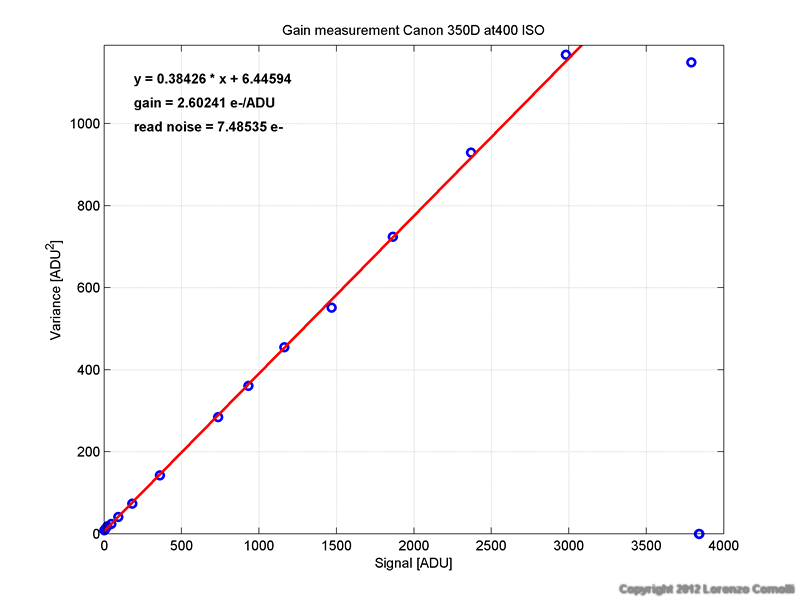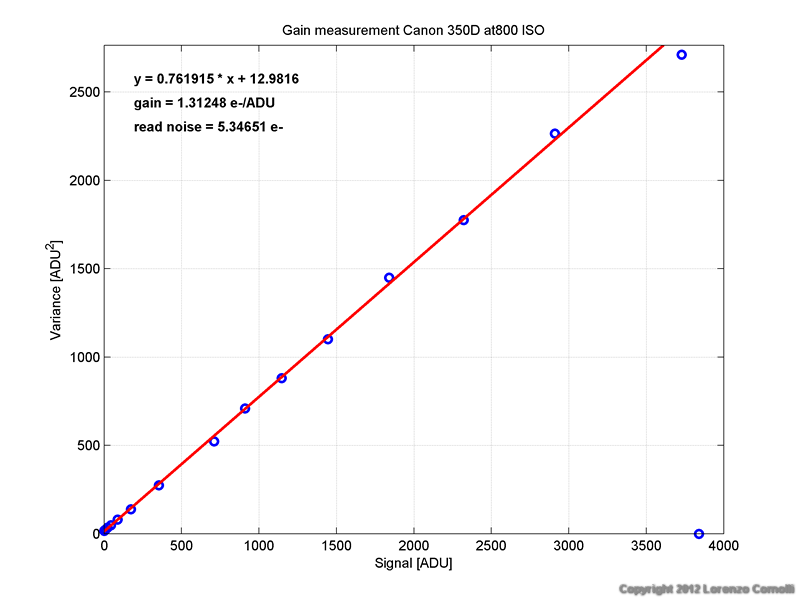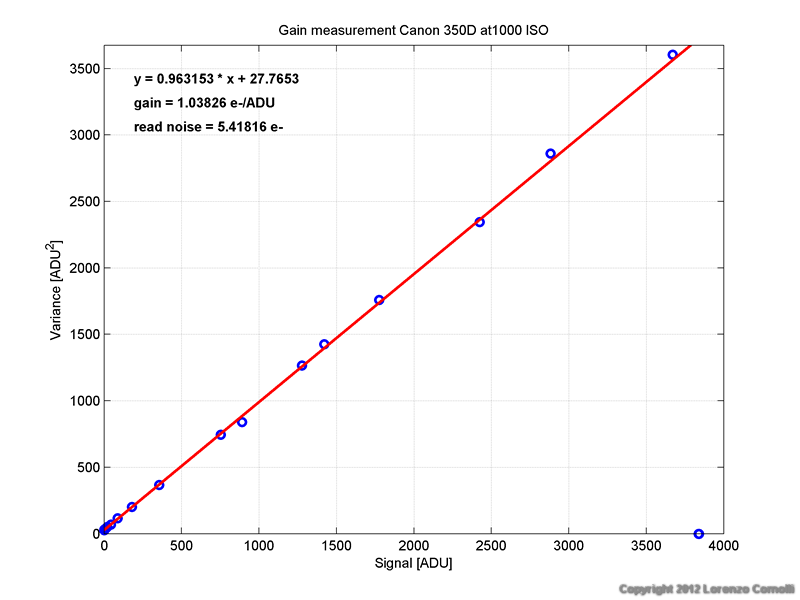|
by Lorenzo Comolli - Written in October 2012 |
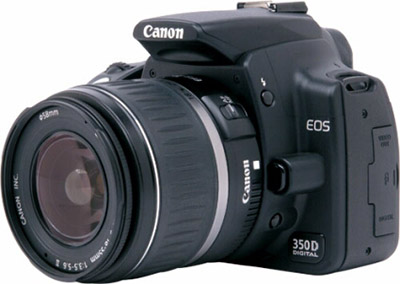
Please note, this test is about a 350D model, with CHDK firmware
Introduction
In this page you'll find a technical test. Please refer here for an introduction, details and testing method.
Available sensitivities:
To distinguish between true and software interpolated sensitivities, the best method is to look at the histogram of a nearly uniform image (like a flat field). The result is shown in the figure below, and the conclusion is:
In this page you'll find a technical test. Please refer here for an introduction, details and testing method.
Available sensitivities:
- standard: from 100 to 1600 ISO with 1 EV steps
- extended: no extension possible
- CHDK: all 1/3 EV steps from 100 to 3200 ISO, including 3200 ISO.
-
Gain. The measured gains
follow accurately the power law, except 1000, 1250 and 3200 ISO that are
slightly out of the line. This is because these are software
sensitivities: 1/3 stops are not possible to be obtained with the simple
integer mathematics implemented in the on board chips, and only 1/8
stops are possible. So 1000 ISO is in truth 800 ISO+3/8EV and 1250 ISO
is in truth 800 ISO+5/8EV. Instead 3200 ISO is 1600 ISO+7/8EV, because
more is not possible on the internal firmware. However please note that
these sensitivities are obtained thanks to CHDK and these problems are
maybe the reason for witch Canon do not released them.
- Unity gain at 1075 ISO
- Read noise. A
constant
decrease is found up to 800-1600 ISO, 1600 is only a little better
respect 800 ISO. Using 3200 ISO produces no improvement
on the read noise. Also 1000 and 1250 ISO have no improvements respect
to 800 ISO, with the same read noise. The reason is clear looking at the
histograms: 1000-1250-3200
ISO are not a true sensitivity, but they are produced by internal
software. For
best results in low light circumstances, use 1600 ISO.
- Dynamic range. Considering a full well capacity of 3000 ADU, the approximate dynamic range is computed and reported both in the table and graph below. The best dynamic range is obviously at 100 ISO, but also 200 ISO has a similar dynamic range. Above that sensitivity the dynamic range start to decrease noticeably. For best results on bright subjects, use 200 ISO or less.
To distinguish between true and software interpolated sensitivities, the best method is to look at the histogram of a nearly uniform image (like a flat field). The result is shown in the figure below, and the conclusion is:
- 3200 ISO and all intermediate 1/3 step sensitivities are obtained
via internal software, in this case by CHDK that uses hidden functions of the original firmware. According to eduperez, and experimenting on a 400D, "internal codes for ISO values follow a 1/8 EV sequence, and the highest
code accepted by the camera is 1600 +7/8 EV; trying to set ISO to 3200
(using the code that really corresponds to ISO-3200) produces broken
images."
The false sensitivities are also confirmed looking at the read noise data: the read noise of 3200 ISO is nearly equal to 1600 ISO, and 1000-1250 ISO are equal to 800 ISO.
- 100, 200, 400, 800 and 1600 ISO are true.
| ISO | gain | read noise | Approx dynamic range |
| [e-/ADU] | [e-] | [dB] |
|
| 100 | 10.4619 |
23.134 | 62.6 |
| 200 | 5.2237 |
12.447 | 62.0 |
| 400 | 2.6024 |
7.485 | 60.4 |
| 800 | 1.3125 |
5.347 | 57.3 |
| 1000 | 1.0383 |
5.418 | 55.2 |
| 1250 | 0.8689 |
5.408 | 53.7 |
| 1600 | 0.6530 |
4.153 | 53.5 |
| 3200 | 0.3652 |
4.443 | 47.8 |
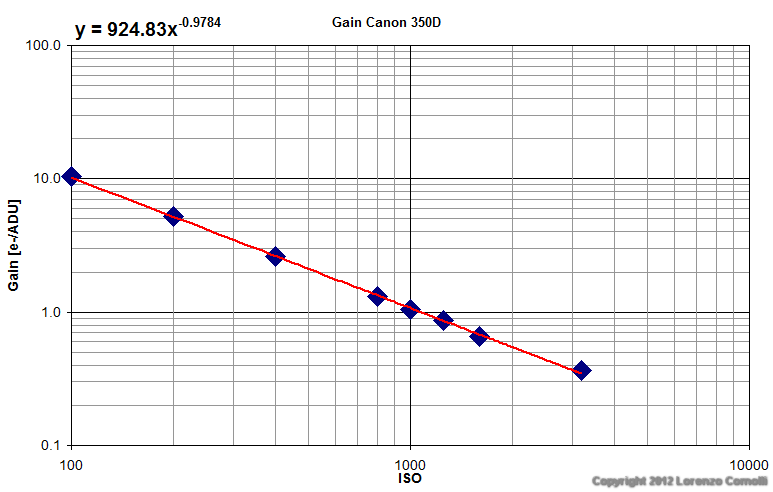
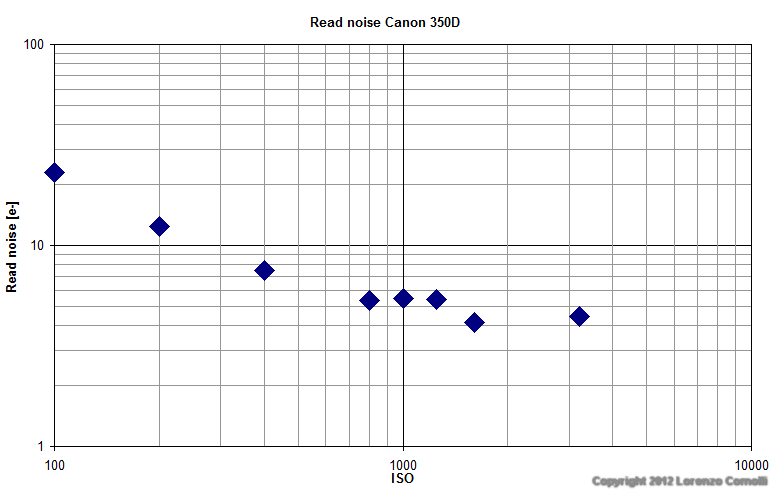
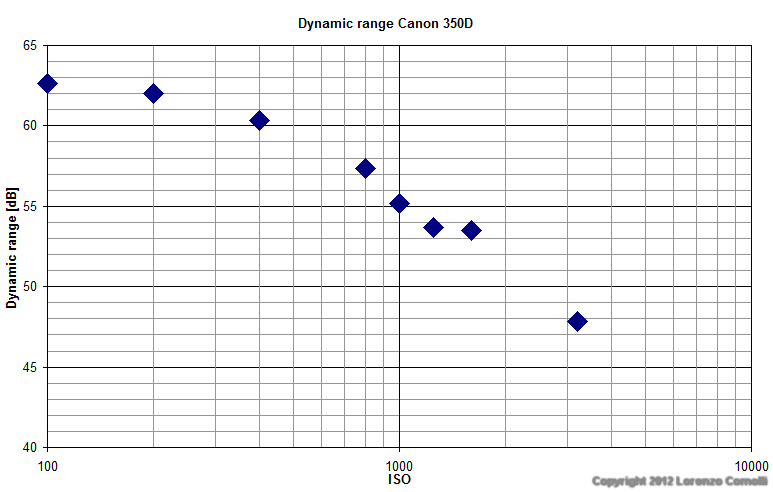
Histograms
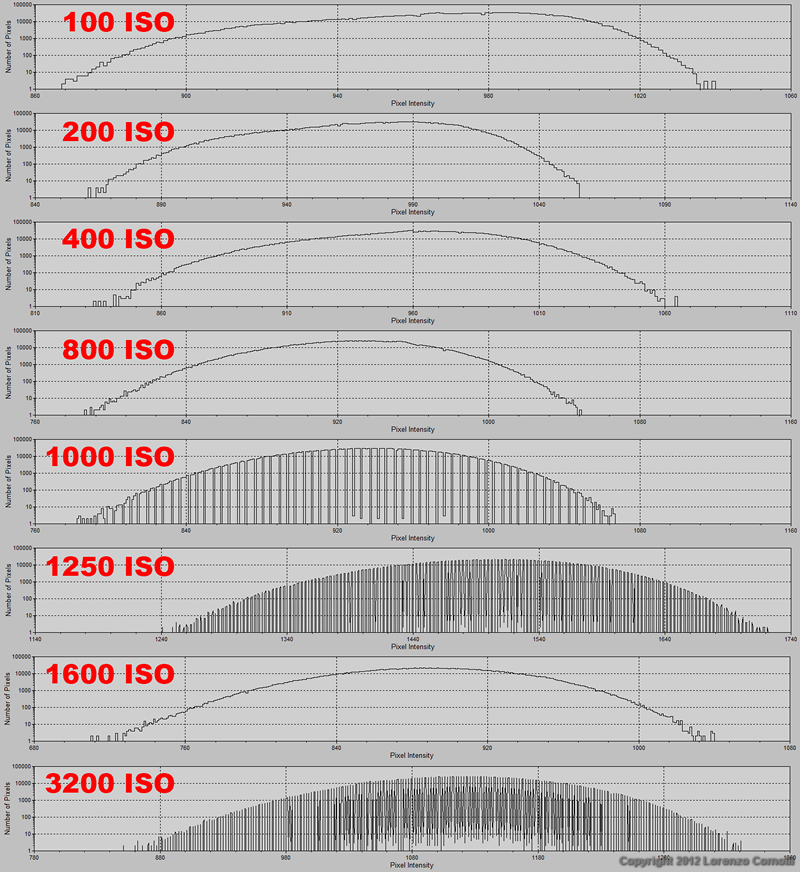
Details of measurements at each ISO setting


